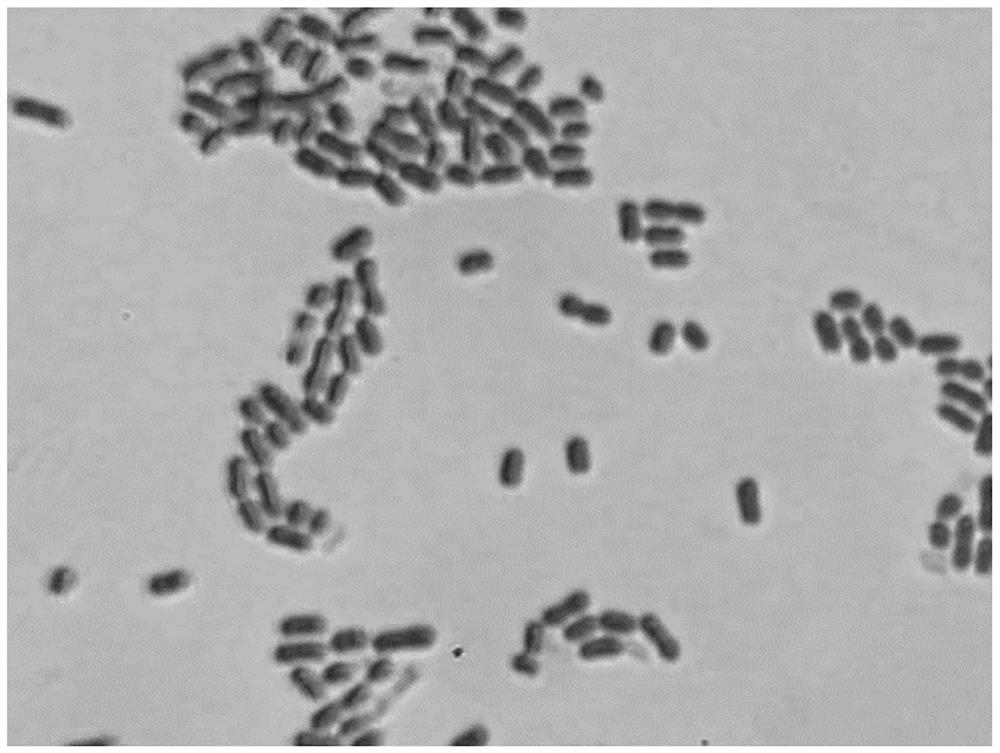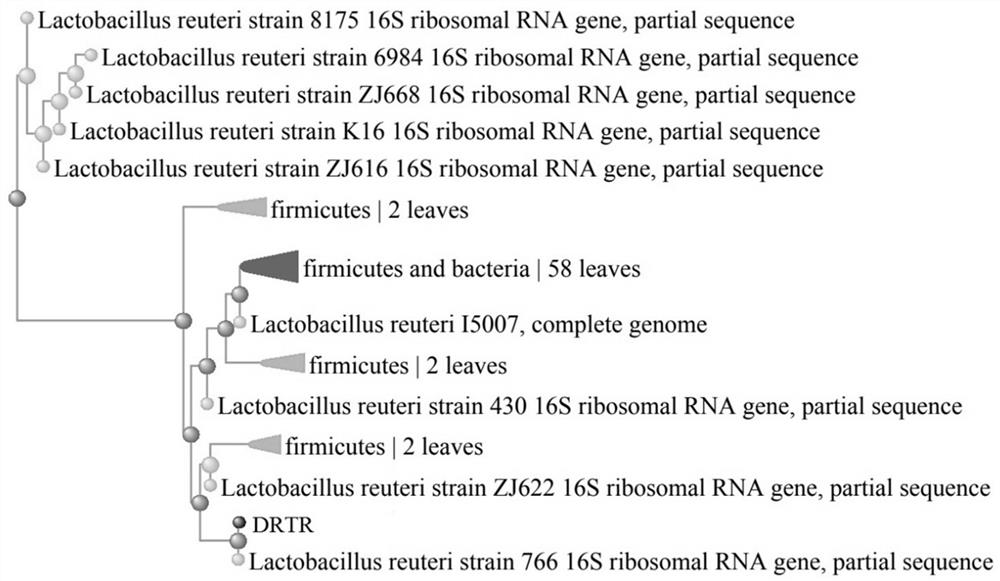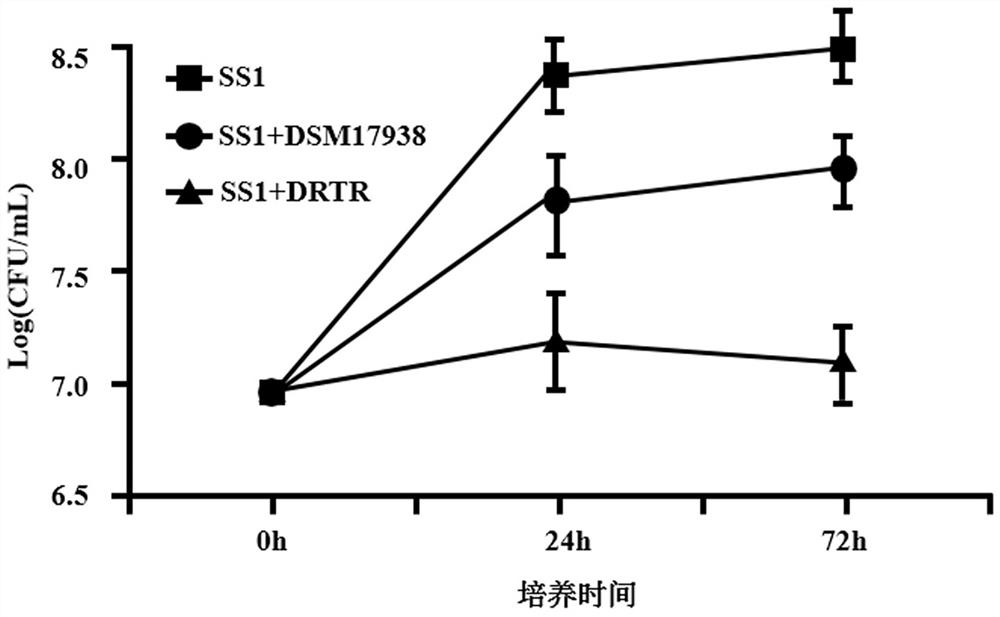Anti-helicobacter pylori infection lactobacillus reuteri and application thereof
A Lactobacillus reuteri and anti-Helicobacter pylori technology, applied in the field of microorganisms, can solve problems such as difficulty in eradicating Helicobacter pylori, achieve good gastric acid resistance, improve eradication rate, inhibit proliferation and urease activity.
- Summary
- Abstract
- Description
- Claims
- Application Information
AI Technical Summary
Problems solved by technology
Method used
Image
Examples
Embodiment 1
[0036] In this embodiment, the lactic acid bacteria screened from healthy humans are screened against Helicobacter pylori infection or inhibiting the growth of Helicobacter pylori. The steps and methods are as follows:
[0037] The assay method for the inhibition rate of Helicobacter pylori is: adopt agar diffusion method to measure the bacteriostatic activity of bacterial strains to Helicobacter pylori. The metronidazole solution with a concentration of 0.05 mg / mL was selected as the positive control, and the MRS liquid medium was used as the blank control.
[0038] The strain used in the experiment of inhibiting Helicobacter pylori is Helicobacter pylori SS1, and the culture medium of Helicobacter pylori SS1 adopts Columbia blood agar medium or liquid medium containing 5% defibrinated sheep blood (v / v). Helicobacter pylori SS1 culture conditions are: microaerophilic conditions (5% O 2 , 10%CO 2 , 85%N 2 ), cultured at 37°C for 72-96 hours. The Helicobacter pylori suspens...
Embodiment 2
[0046] In this example, the strains with high bacteriostatic rate screened in Example 1 were screened for acid resistance and bile salt resistance.
[0047] The 4 strains of lactic acid bacteria with a significantly high bacteriostatic rate in Example 1 were screened for acid resistance and bile salt resistance, and the test strains were respectively coated on the MRS agar medium containing 0.3% bovine bile salt and pH=3.5 for comparison According to the differences in the growth of colonies on the two agar media, lactic acid bacteria with high acid and bile salt resistance were screened out, and finally the strains were accurately identified by 16SrRNA sequencing. Bacterial ability, determine a strain numbered DRTR strain.
[0048] Table 2 Growth of strains on acidic and bile salt medium
[0049]
[0050] It can be seen from Table 2 that the activity of each strain decreased on acidic and bile salt medium, the main reason being that although this screening method is conve...
Embodiment 3
[0052] In this example, the DRTR strains screened in Example 2 with high ability to inhibit Helicobacter pylori, acid resistance and bile salt resistance were purified and preserved.
[0053] The DRTR strain obtained in Example 2 was streak cultured on an MRS agar culture machine for 48 hours, and a bright and plump single colony was selected and placed in 10 mL of liquid MRS medium, and cultured statically at 37°C for 12-16 hours to obtain purified bacteria liquid. Take 5mL of purified bacterial solution and add 30%-40% sterile glycerin at a volume of 1:1, mix well and distribute into 2ml sterile cryopreservation tubes, pre-cool at 4°C for 2 hours, and then pre-freeze at -20°C 4h, and finally transferred to -80°C refrigerator or liquid nitrogen for storage.
PUM
| Property | Measurement | Unit |
|---|---|---|
| Water activity | aaaaa | aaaaa |
Abstract
Description
Claims
Application Information
 Login to View More
Login to View More - R&D
- Intellectual Property
- Life Sciences
- Materials
- Tech Scout
- Unparalleled Data Quality
- Higher Quality Content
- 60% Fewer Hallucinations
Browse by: Latest US Patents, China's latest patents, Technical Efficacy Thesaurus, Application Domain, Technology Topic, Popular Technical Reports.
© 2025 PatSnap. All rights reserved.Legal|Privacy policy|Modern Slavery Act Transparency Statement|Sitemap|About US| Contact US: help@patsnap.com



